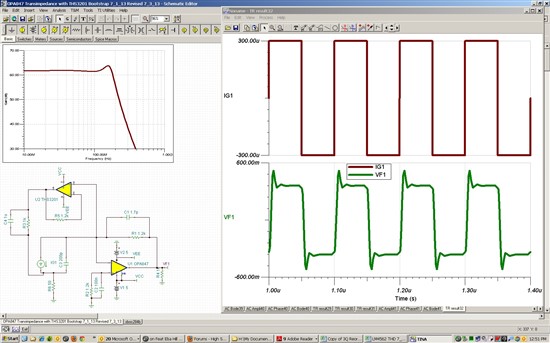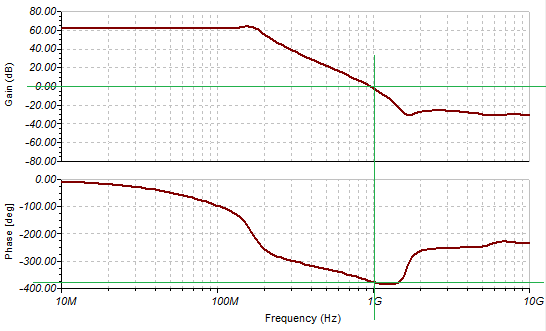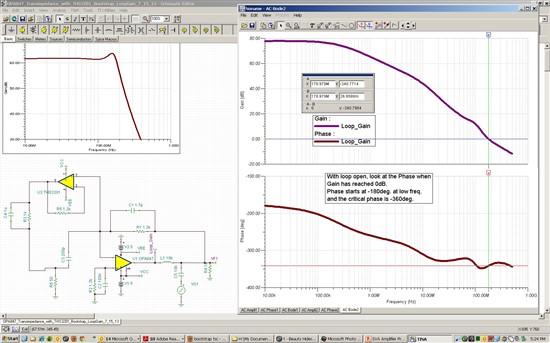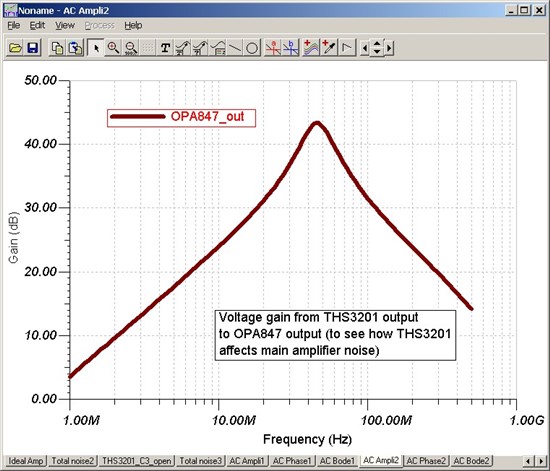Hi guys,
I am designing an transimpedance amplifier with an diode capacitance for nearly 50pF, and the frequency would go up to 35MHz. I used the basic topology with the OPA847 to realize the goal. However, I would like to increase the capacitance to 100pF.even 150pF if possible. while remains the bandwidth. One way that i consider is bootstrap technology. But I tried with TI components, it did not work for me.
Maybe because of the stable gain for OPA847 should not be unity. I tried the amplifier for unity gain stable as well, but it did not work either.
Could TI recommend design topology for this specific requirement? So that the bandwidth would not be affected.
Thanks very much! and I could also be reached with the email caizhch(at)gmail.com, thanks for every comment!
Jason






